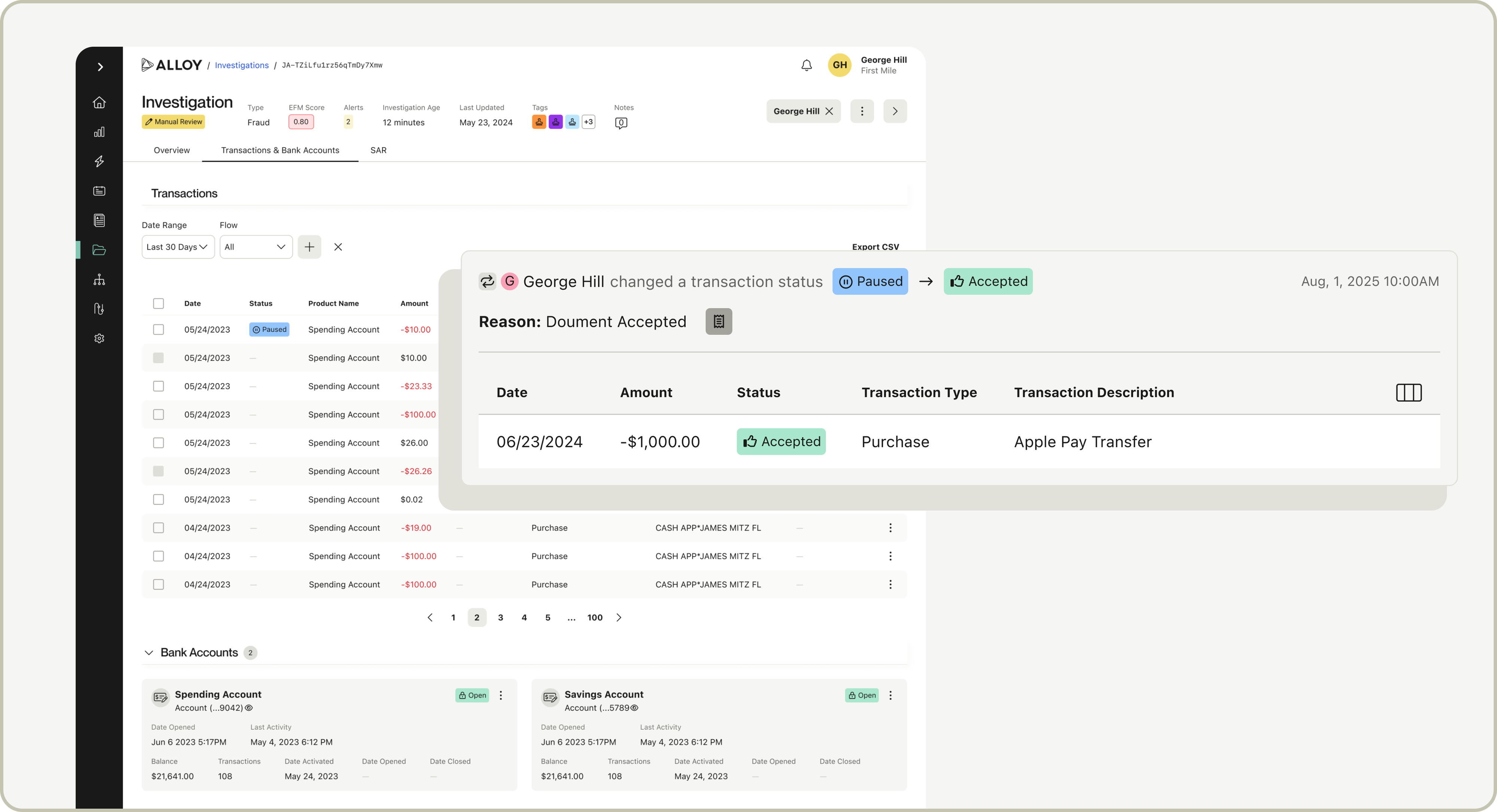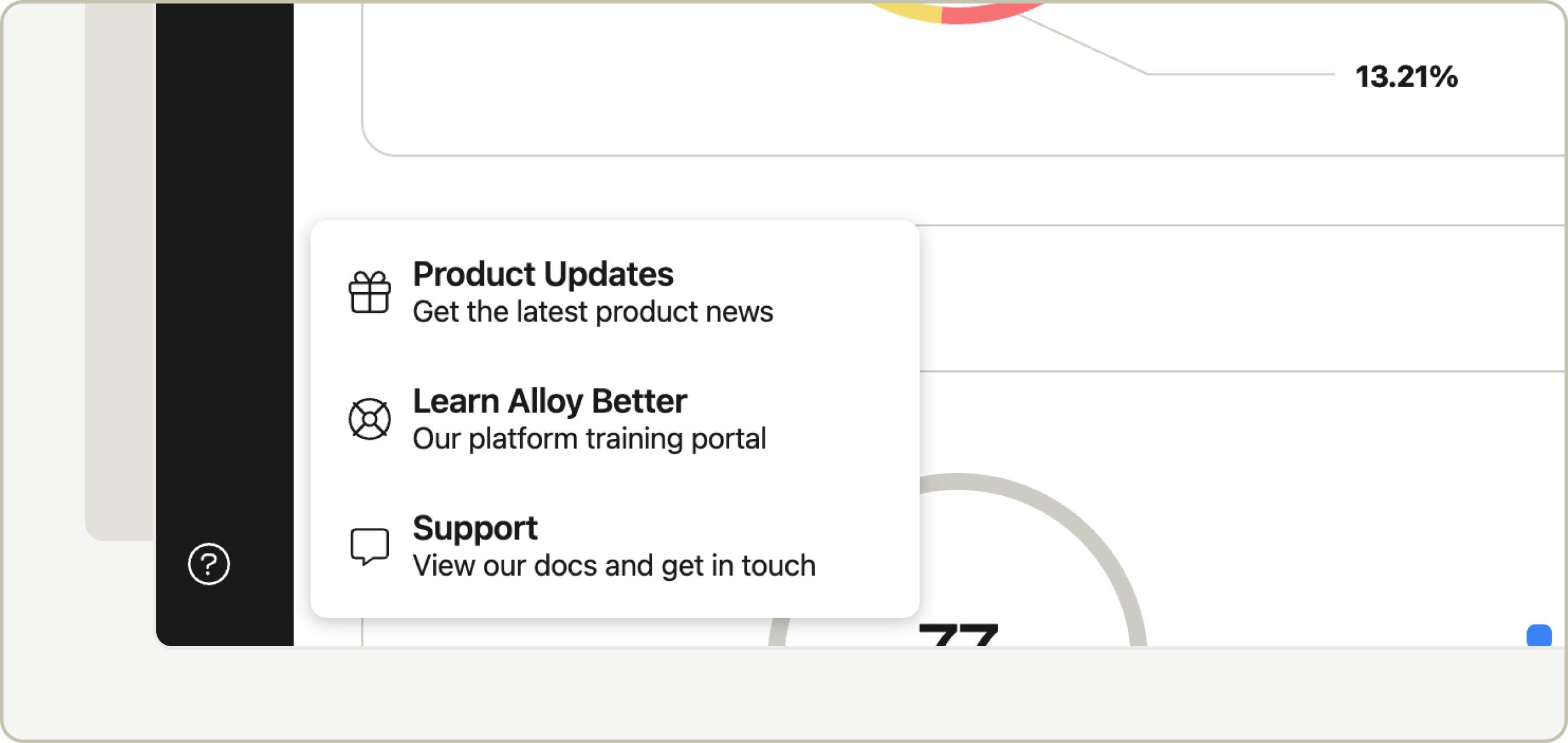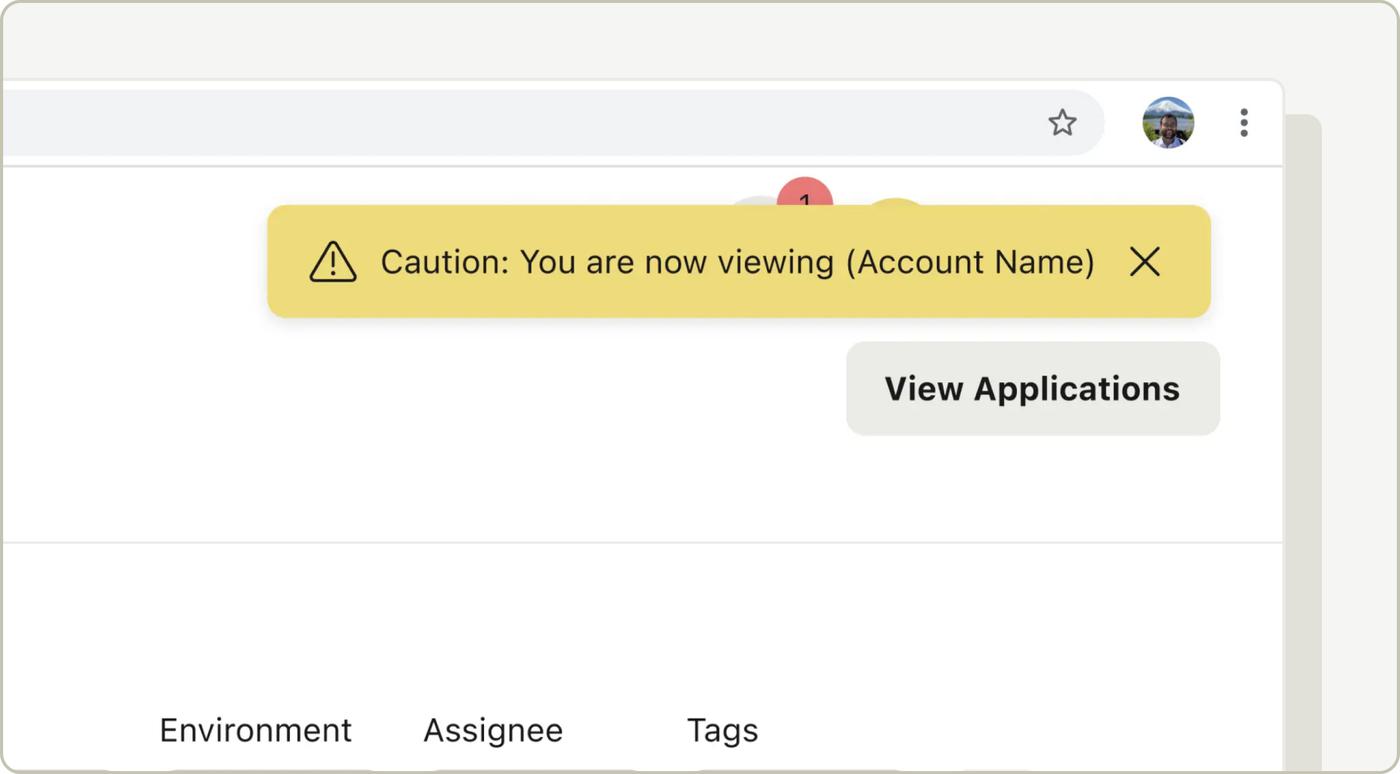Transaction & bank account details in Investigations

Transaction & Bank Account details now have a new and improved home within an Investigation. Investigations is our new unified alert triage and case management system that provides agents with a holistic view of entity risk, enabling your team to decision and action on suspicious activity within a single, intuitive interface.
Users can now review transaction history and bank accounts linked to an entity during an Investigation from the new, dedicated tab. Stop a transaction before funds can leave a customer's account, or freeze a bank account exhibiting risky behavior directly from the Investigation UI.
Here's what you should know:
- This feature is available for all clients using Investigations*
- Configure webhooks via Settings to be notified about status updates on transactions and bank accounts, which can be triggered directly from an Investigation
- View a customer's transaction history and linked bank accounts in a dedicated tab within an Investigation
- Update Permissions via Settings to provide specific roles with access to make status updates
*Not on Investigations and keen to learn more? Reach out to your Alloy representative.


